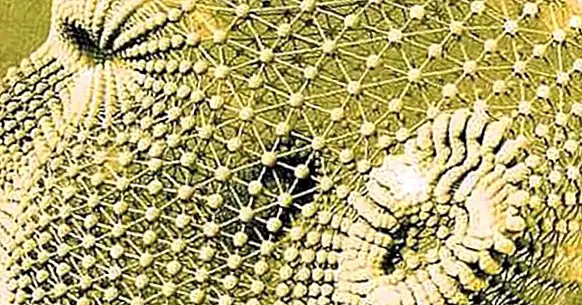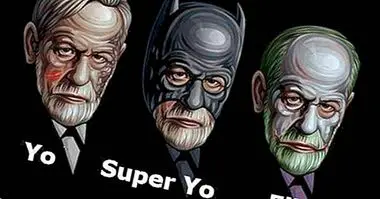The biological behaviorism of William D. Timberlake
Behaviorism is one of the main theoretical currents that have explored and tried to explain human behavior. From a perspective that pretends to work only from empirical data that can be compared and objective, this approach was at the time a great revolution and has meant a remarkable advance in the face of developing new perspectives and improving existing ones.
Over time, different subtypes of behaviorism have emerged, focusing on different elements or making various relevant theoretical contributions. One of the existing subtypes of behaviorism is the biological behaviorism of William David Timberlake .
- Related article: "The 10 types of behaviorism: history, theories and differences"
Bases of biological behaviorism
Behaviorism, as a science that studies human behavior based on empirically evident objective elements, has analyzed human behavior based on the capacity of association between stimuli and responses and between the emission of behaviors and the consequences of these will cause the behavior to be reinforced or inhibited .
However, despite the fact that it has diverse applications of great utility, behavioral techniques and practices have traditionally been carried out in non-natural contexts, located in a controlled environment that does not take into account other multiple facets that may affect .
In addition, the subject is usually considered to be a merely reactive entity, which receives the properties of the stimuli and reacts accordingly producing an apprenticeship . It is not usually taken into account that the subject presents characteristics that influence behavior, with traits and abilities rather the result of learning. Several neo-behavioral authors have varied this approach, taking into account the capacities of the subject and the inheritance of partially innate behavior patterns and abilities.
The perspective defended by Timberlake's biological behaviorism proposes that learning is a biological-based phenomenon that is produced from patterns of behavior and constitutional dispositions that are given in an innate way and that are linked to the niche or environment in which the subject it develops.
It is a version of behaviorism in which both functional and structural factors of behavior are combined. Natural selection has generated the evolution of the perceptive dispositions , the skills and behavioral patterns that allow conditioning to be generated and learn more or less easily determined ways of understanding or acting. In other words, Timberlake defends the existence of variables and brain structures that help explain behavior.
- Related article: "History of Psychology: authors and main theories"
The role of context
The niche or functional context is the place where the subject develops and which allows the organism to evolve. This niche has a structure and properties that allow, through learning, to generate changes in the elements already preexisting in the subject.
A) Yes, the experience and activity of the individual generate a modification of the responses to the and a change in the preference and perception of the stimulation. In other words, we learn from experience to generate alterations in the organism. The characteristics of the stimulus will be perceived differently depending on the subject is acting.
In this aspect, biological behaviorism is novel, since it assumes that the behavior is not generated by the stimuli themselves it only causes a change in pre-existing conditions. It is the subject who, actively, generates structural changes that allow reacting to reality in certain ways, but takes into account that there are elements that are relevant to the environment and learning.
Behavioral systems
Timberlake's biological behaviorism proposes the existence of behavioral systems , groups of independent functional patterns organized hierarchically and that describes the organization of the basic functions for the survival of the individual before even carrying out an apprenticeship, which will vary this structuring.
This system is configured by various behavioral subsystems, which specifies a part of the function that generally explains the type of action that is carried out.
These subsystems in turn are shaped by the ways or ways in which each action is performed or perceived reality is part of the different behavioral subsystems. In these ways modules or categories that group different actions are derived . And in each module there are concrete answers that can be caused by environmental stimulation.
- Maybe you're interested: "Behaviorism: history, concepts and main authors"
The learning
Although the biological behaviorism of William D.Timberlake part of an ecological conception that takes into account the existence of internal aspects that allow to direct the learning , the truth is that Timberlake defends that learning is still the effect of the behavior itself. And is that different systems need learning at the behavioral level to be developed and modified effectively
Each organism comes with a set or set of skills that allow you to learn certain behaviors before certain stimuli. For example, if we did not have pain perception we would not take our hands away from the fire. But having such a perception of pain will not make us close our hands to the fire either. We will not learn to do it if we do not realize through experience or learning the set of associations between stimulus and response.
Biological behaviorism is a subtype of behaviorism that part of the radical behaviorism of B. F. Skinner and that studies behavior through operant conditioning, but takes into account the existence of an exploratory contact of the elements of a system before the association begins. In order for the study subject to achieve real conditioning, it is necessary to tune the environment and the subject so that what is learned adjusts to the possibilities of the subject and he can learn.
- Related article: "B. F. Skinner: life and work of a radical behaviorist"
Bibliographic references:
- Cabrera, F .; Covarrubias, P. and Jiménez, A. (2009). Behavioral systems from an ecological approach. Studies on behavior and applications. Vol. 1. Guadalajara.
- Timberlake, W. (2001). Motivational modes in behavior systems. In R.R. Mowrer and S.B. Klein (Eds.), Handbook of contemporary learning theories (pp. 155-209). New Jersey: Lawrence Erlbaum Associates.
- Timberlake, W. (2004). Is the operant contingency enough for a science of purposive behavior? Behavior and Philosophy, 32, 197-229.



















